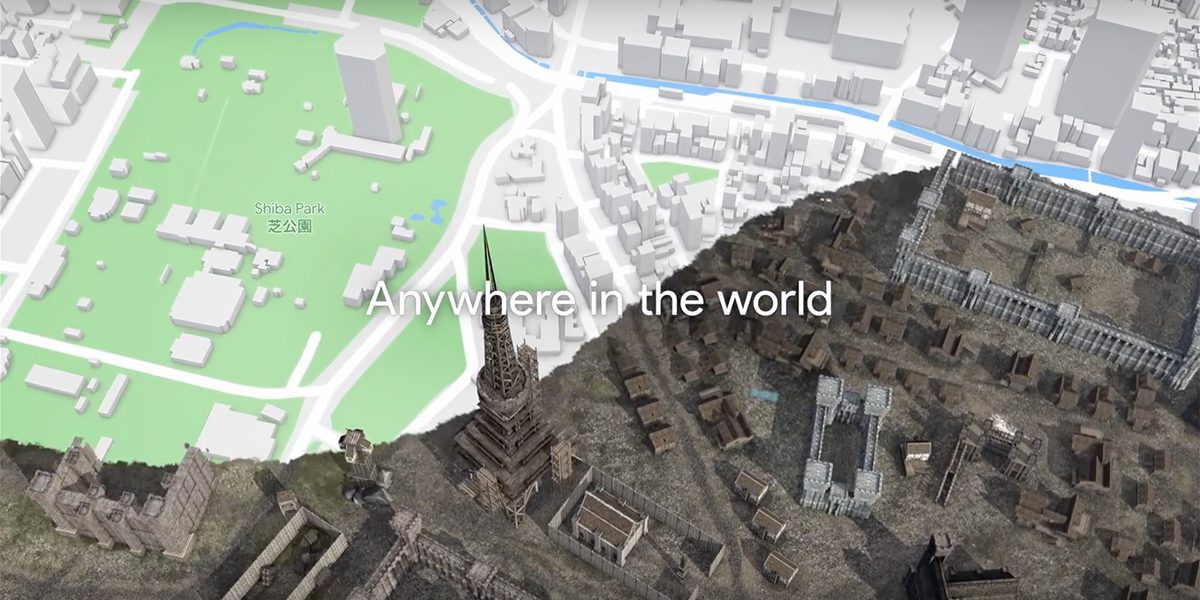I recently blogged about businesses adopting augmented reality to make the consumer experience more dynamic and exciting. On March 14, Google reminded businesses that augmented reality is coming whether they use it or not. The search giant and media company said that it has developed a tool that makes it possible for developers to turn Google Maps locations into augmented reality enhanced make-believe settings.
In a blog post, Google said,
The mobile gaming landscape is changing as more and more studios develop augmented reality games. In order to mix realities, developers first need to understand the real world — the physical environment around their players. we’re excited to announce a new offering for building real-world games using Google Maps’ tried-and-tested model of the world.
Game studios can easily reimagine our world as a medieval fantasy, a bubble gum candy land, or a zombie-infested post-apocalyptic city. With Google Maps’ real-time updates and rich location data, developers can find the best places for playing games, no matter where their players are.
Now let’s connect the dots about what’s going on here. Remember how the skyrocketing popularity of Pokémon GO turned real-world businesses into make-believe Poké Stops and Gyms where Pokémon GO players could do battle with Pokémon and collect rewards? Well, nearly two years later, millions of people still play Pokemon GO, proving that a game using augmented reality:
- Has staying power.
- Can draw people to real-world location – creating foot traffic and sales for brick-and-mortar businesses such as coffee shops, stores, and restaurants.
Now, we’re seeing an explosion of more games that will probably have the same impact on businesses – experiences such as the forthcoming Harry Potter: Wizards Unite, Jurassic World Alive, Ghostbusters World, and Walking Dead: Our World. All those augmented reality games are coming in 2018, and the Jurassic World, Ghostbusters, and Walking Dead games were developed with the Google ARCore toolkit for developing augmented reality experiences.
Here’s what’s going to happen this summer:
- An uptick of augmented reality promotions from the studios producing the movies associated with the games. These promotions will likely involve co-brands with restaurants and other locations where fans can play the games.
- Brick-and-mortar businesses jumping on to the augmented reality bandwagon when they see how many consumers are using their mobile phones to play the games near their locations, even if those businesses don’t co-brand with studios. We’ll have businesses promoting themselves as the hottest place for Harry Potter fans to battle Lord Voldemort, and stores offering promotions for fans to celebrate the joy of playing Ghostbusters together – just as brick-and-mortar companies did with Pokémon GO at the height of its popularity.
At the center of all this action: Google. Google, like Apple, is developing the tools to make augmented reality spread. Google sees the future and wants to be an active participant by creating augmented reality based marketing and advertising of its own. And Google has the power to shape that future.
By making an augmented reality toolkit available, Google is opening the door for many, many more augmented reality games to get developed way beyond the major titles being released by studios and Niantic (creator of Pokémon Go and the new Harry Potter game). If Google has its way, more businesses and developers will work together to create their own customized games relying on a business’s location. The development could become huge – or also create some augmented reality burnout if too many games get developed at once. Ultimately, consumers will decide which games win and which ones fall by the wayside. As Pokémon GO showed, people will respond to an experience that engages them.
To discuss how to create a more engaging digital brand, contact us. We’re here to help.
